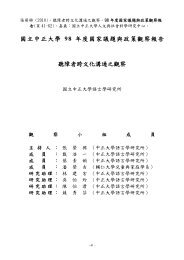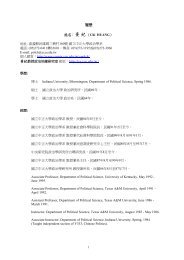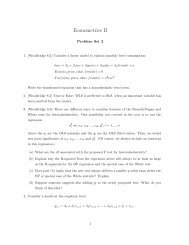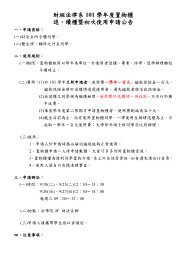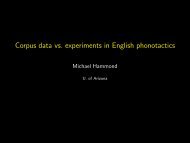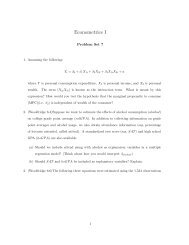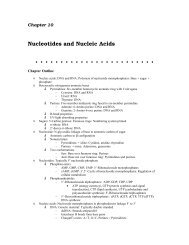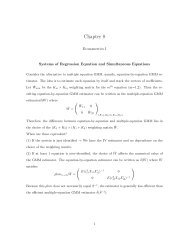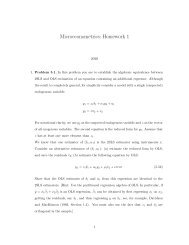Slides
Slides
Slides
Create successful ePaper yourself
Turn your PDF publications into a flip-book with our unique Google optimized e-Paper software.
Table 3. No. of verb types before inflections<br />
(Pine, Lieven and Rowland 1998)<br />
Subjects -ing -s -ed<br />
Rita 17 2 4<br />
Joey 32 5 8<br />
Julie 12 2 3<br />
Jean 30 2 4<br />
Ricky 8 2 1<br />
Eva 11 8 2<br />
Helen 4 2 -<br />
Carl 11 - -<br />
John 1 1 1<br />
Simon 22 - 2<br />
Olga 7 - -<br />
Laura 4 - 1<br />
Mean 13.3 2.0 2.2<br />
Example 2 : V + CP (Diessel 2004)<br />
A study of CHILDES data of five children covering the age range 1;7 to 5;1.<br />
For all five children (Naomi, Peter, Nina, Sarah, Adam) the most frequent<br />
complement taking verbs of the children's finite complement clauses are the following,<br />
which constituted 80% of the tokens:<br />
know, see, think, say, look (mean %: 22.9, 20.5, 19.0, 9.8, 8.8).<br />
(I) think it's a cow. [Peter 2;2]<br />
Know what that is [Nina 2;3]<br />
Let's see if we can fix them. [Peter 2;3]<br />
Diessel argues that most utterances that include a finite complement clause in early<br />
child speech are simple nonembedded sentences containing a single proposition.<br />
These 'matrix verbs' are epistemic markers, attention getters or markers of<br />
illocutionary force.<br />
2.4 Combinatorial versatility<br />
There should be a certain degree of overlap in the cooccurrence patterns of various<br />
members of the category.<br />
Example: Aux + V (Pine, Lieven and Rowland 1998)<br />
6




